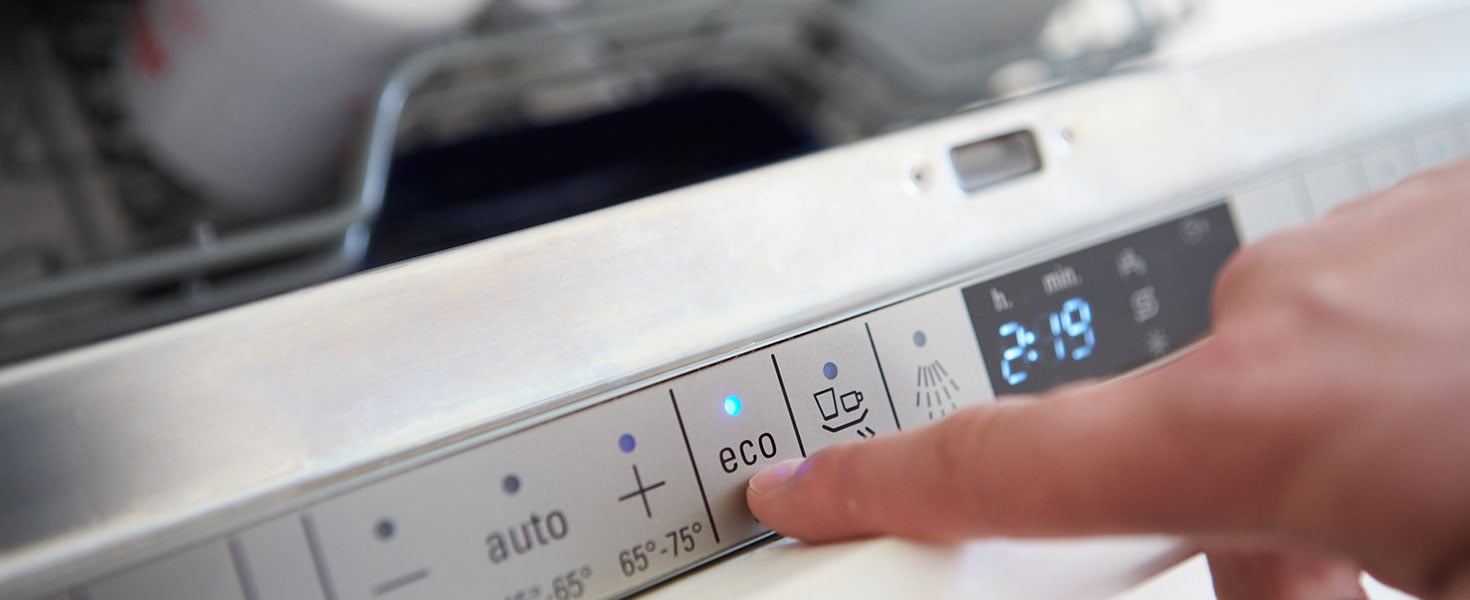

Doing laundry, taking out the trash, vacuuming, scrubbing the toilet…these are likely all part of your regular cleaning routine. But did you know there are other items in your home that need to be cleaned regularly, including your dishwasher?
In theory, your dishwasher should be cleaning itself every time you run it. However, this isn’t necessarily the case. Taking a few preventive steps can help keep it in top working condition and save you money on repairs or replacement.

DOES YOUR DISHWASHER NEED TO BE CLEANED?
Over time, pieces of food, grease, undissolved detergent, and water minerals can build up on your dishwasher’s filter and interior walls. This gunky buildup can cause your machine to smell, and it can actually leave spots and film on your dishes. Without proper cleaning and maintenance, the dishwasher won’t be able to do its job.
Plus, this buildup can actually damage the filter and pump, which can lead to costly repairs.

HOW OFTEN SHOULD I CLEAN MY DISHWASHER?
How often to clean your dishwasher depends on how often you use it and how old it is. At minimum:
- Daily, or after each use—you should remove visible bits of food or other scraps.
- Weekly—wipe down the door edges and gasket, plus remove and clean the filter.
- Monthly—deep clean the interior.
Most brands recommend thorough cleanings on a monthly basis if you use your dishwasher regularly. Otherwise, if you only use the dishwasher occasionally, you can deep clean it once every few months. Never go more than six months without a cleaning.

HOW TO CLEAN YOUR DISHWASHER
Cleaning your dishwasher doesn’t have to be difficult, costly, or time consuming; but it can help stop bad odors, keep the machine running properly, and prevent you from having to pay for expensive repairs.
- Remove any remaining food or debris after every wash. Pull out the bottom rack and use your fingers or a paper towel. You can also wash the removable parts, like the utensil holder and washer racks, after each use.
- If food is caked on, fill your sink with warm water and add one to two cups of white vinegar. Place the parts in the sink and let them soak for 15-20 minutes, rinse them, and put them back in the dishwasher.
- To clean the door, use a cloth or paper towel to wipe away residue or spots. Check the interior surface of the door, door edges, handle, and controls.
- To clean the door gasket, use a soft toothbrush or damp cloth to scrub away any gunk from the rubber seal.
- To clean the filter, remove the bottom rack. Check your owner’s manual or the manufacturer’s website for specific details, but for most machines, unlock and remove the filter and run it under hot water. Wipe the filter base with a damp cloth. Using a soft toothbrush or other soft bristle brush, wash the filter’s mesh screen and plastic frame to remove grease or particles. Rinse it thoroughly and lock the filter back into place. Be sure it’s locked in properly before running the dishwasher again.
- To clean the drain, put one cup of white vinegar in a large, microwave-safe bowl and heat it for 15 to 20 seconds so it’s slightly warm. Stir in two tablespoons of baking soda, and pour the mixture into the drain at the bottom of the dishwasher. Let it sit for 10 to 15 minutes. Then, slowly and carefully, pour boiling water down the dishwasher drain. This can help clear out any clogs or debris.
You can also buy dishwasher cleaners to use once per month to help remove trapped particles, buildup, detergent, and other residue in your machine’s internal parts that you can’t reach. These cleaners dissolve and clean away this residue, keeping your dishwasher operating effectively.
Or, vinegar is another option. Place a dishwasher-safe bowl filled with one cup of distilled white vinegar on the top rack of an empty dishwasher and run a normal cycle. Don’t add detergent, and set the water level to “hot.” For extra clean, sprinkle some baking soda in the bottom of the washer.
When using a cleaner or vinegar for the deep clean, skip the drying cycle and open the dishwasher door to let it air dry.
Do not use bleach in a stainless steel dishwasher or a dishwasher that contains stainless steel parts. Also don’t use bleach with baking soda or vinegar. Bleach can damage and ruin the internal parts of the machine.
